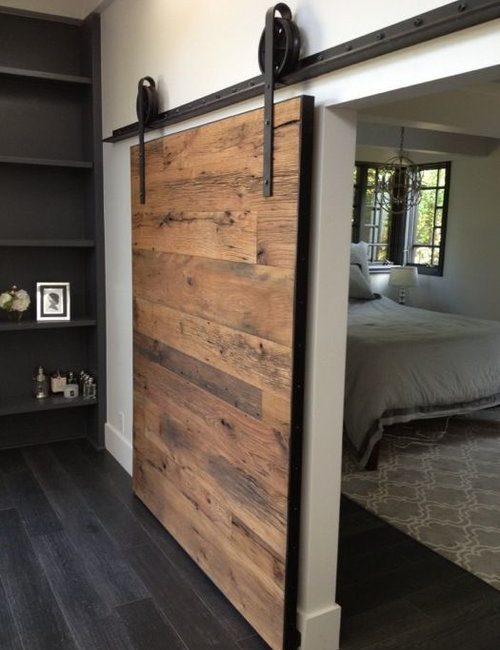
Heritage Wood Given New Life With Reclaimed Barns And Beams
They say that fate works in mysterious ways, but for Angie Crouse, it was more on the heavy and dirty side. Crouse, the owner of Reclaimed Barns and Beams, had grown tired of all the travel required for her corporate job and wanted to spend more time at home with her seven children. When a gentleman offered his barn to her if she would take it down, she knew she had found her niche.
As many small-business owners know all too well, getting a company off the ground is often the hardest part. Crouse was enchanted by the barn’s beautiful pine flooring, massive hand-hewn beams—ideas and plans were flying through her head—but the reality proved to be a challenge. “I did not have a truck, tools, machinery, trailers, or help. But those were just details. I saw a bigger picture,” she says. While Crouse comes from a long line of carpenters and builders, she does not have any formal training in woodworking, and she acquired most of her skills through videos and trial and error.
What was it about barns, specifically, that resonated with Crouse? Like many Hoosiers, they were such a familiar part of our farming landscape that she rarely gave them a second glance. The lightbulb went off three years ago when she realized they were a treasure trove of historic value.
However, dismantling a barn is no quick, easy task. “Reclaimed lumber is dirty and heavy,” she says. “The wood is taken from the barn one board at a time. Those boards have nails that must be removed. It all needs trimmed and hauled. Back at the shop, it is stacked so it can breathe. Air circulating around the wood is what keeps it from rotting or molding. Heritage wood can contain powder post beetles and moisture, so it needs to be dried in a kiln. After that occurs, it needs to be stored where it is dry. We haven’t even gotten around to creating with the material at this point, and finding the time and space to accomplish all of this work is challenging.”
Crouse found that it was easiest to partner with makers who already had the larger equipment for brush-sanding lumber, straight line–ripping material, and kiln drying. These partnerships allowed her to save money in her start-up budget and retain valuable space in her shop, especially since she was working out of her garage for the first year.
As most of the details began to fall into place, Crouse realized that many others shared her appreciation and passion for historic wood and reclaimed materials. Some client names you may recognize? Mother-daughter duo Mina and Karen from HGTV’s Good Bones. They connected with Crouse while designing their carriage house (season 3, episode 9) and immediately recognized their shared vision. “She (Karen) wanted to incorporate the warmth and history into her space. Her vision and excitement for her reclaimed ceiling is one of my favorite things. The philosophy behind the show is so similar to mine: saving something with history and memories and passing it along for a new life,” she says. Mina and Karen were certainly happy customers, as they will work with Crouse again in season 4 (sorry, no spoilers!), so stay tuned.
A new brick-and-mortar store in downtown Shelbyville now allows Crouse to showcase her unique home décor, light fixtures, custom mantels, farmhouse dining tables, sliding barn doors—while also providing potential clients with a space to visualize and design their own special projects. The storefront was built in 1892, and Crouse was delighted to discover the original oak floors hidden beneath three layers of subfloor. She also uncovered brick walls behind plaster and drywall.
With three successful years under her belt, Crouse continues to pick up momentum. She’s currently working on the new United States Auto Club building in Speedway—and make a name for herself, with features in Country Living and Farm World. Have a project you’d like Crouse to tackle? Visit the website or see her work in person. 19 N. Harrison St, Shelbyville, afternoons Wednesday–Friday and by appointment on the weekends.





